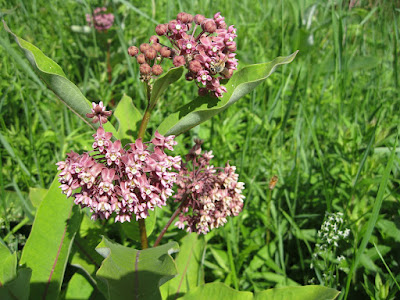Six days ago a new surface appeared on our road. It appears to be seamless suggesting that the entire width was placed at the same time. River Road was closed and we never saw the machine. When we did return home we encountered a sharp steep drop off from the road to our driveway. Completing the turn on the road, we slowly drove straight down the drop without damage to the car. A small amount of the oil and stone mixture had been placed across our entrance. This needed further attention.
Several days passed with nothing else happening. We bought a ten yard load of carefully screened gravel and had it dumped at our gravel bank. Using my lawn tractor and cart, ten loads required two days for me to move this fill. It is the brown wet mass at roadside. The drop from the road to our lane remains excessively steep so the job remains unfinished. At 78 it is necessary to carefully pace myself. Years ago I read that dry sand is impossible to pack down. Wet sand will pack down and when dry it will present a surface similar to cured cement.
This picture shows the extent of the drop from the roadway to our driveway. The black stone and tar mix was placed here after the roadway had been placed. The drop from the road was abrupt. We were afraid that the car would bottom out possibly causing damage. So we took matters into our own hands and began hauling fill. What can be seen is two layers thick. Yesterday's layer has been packed down while today's is letting its moisture work its way into the lower layer. When the time seems right our Toyota pickup truck will serve as a steam roller.
The unfilled area in the foreground is beyond the edge of the driveway. It is a seriously deep hazard and will require attention after a smooth transition from highway to driveway is finished. That will require days of somewhat limited effort.
This picture shows the need for still more fill. Our goal is a longer less steep surface from the roadway to our driveway. Our efforts presently span the width of the driveway but some users require a huge area to complete their race track turning style. We plan to define the deed described right of way with gravel fill and the adjacent lawn with soil fill, grass seed and straw mulch. This has never worked in the past but I will try again.
The wet area in the foreground is the path taken after our mail is delivered. That may mark the limit of our gravel fill.
The track across the grass is the path used by our US Mail carrier. The sharp drop off has little impact now but plowing snow here will be difficult at best. I intend to fill the area from the road, across the path, and far enough onto the lawn to give us a solid workable access to our mail box. This will take some time. I wonder if the Town of Unadilla will pick up the tab for the gravel needed to finish their job. Judging from the coarse gravel in the back of their truck that simply went right past me, I will get a better job if I do the work myself.
There is no question that our road is now better than it has ever been. Unfortunately, it now appears that no plans were made to deal with the area adjacent to the road. Several mailboxes present a problem but a more serious issue is the drop off in some places where a shoulder might be expected. On the first curve encountered driving eastward, the drop appears to be six inches deep. A driver moving toward the edge of the pavement to miss a truck or a piece of farm machinery could easily drop into this void. A damaged or wrecked vehicle is possible.
The day following this post I felt the need to talk with the Highway Superintendent about its existence. He told me that the machinery necessary to build proper shoulders had been ordered and that it should be here in a week or two. He is well aware of the sharp drop offs and is planning to correct that issue. We also touched on the mail box placements that the machine will encounter. I do not know if the road work will precede the relocation of some mail boxes. Perhaps it would have been better if I had talked with him before publishing the post.





































